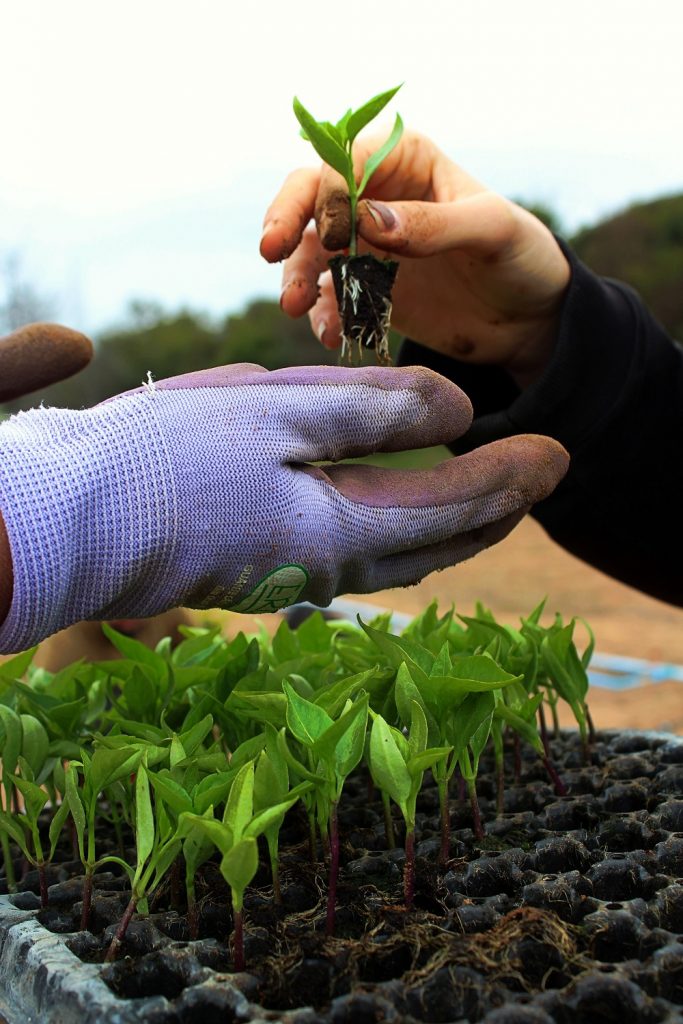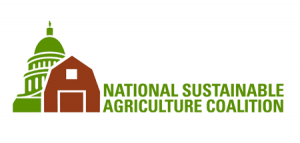An exploration of facts and figures relating to the environmental impact of farming, and the organizations and solutions presented by sustainable agriculture.
By Ana Yong

What is Sustainable Agriculture?
Sustainable Agriculture consists of three components: (1) economic, (2) social, and (3) environmental.
A sustainable farming business should be money-making and fund a healthy economy. It should also treat its workers fairly and enjoy a reciprocally favourable relationship with the community. The environmental aspect requires farmers to practise good governance and administration of the native frameworks and resources available to them. This includes but is not limited to:
- Creating and retaining healthy soil,
- Overseeing the prudent use of water,
- Reducing water, air and climate contamination, and
- Encouraging biodiversity.
Environmental Impact of Farming
a) Deforestation
This is defined as the effect agricultural practices on the ecology. According to worlatlas.com’s article entitled “What Is The Environmental Impact Of Agriculture?” dated 16 June 2020, deforestation is a major issue associated with farming.
Deforestation involves the clearing of forests on a huge scale which causes land destruction across several parts of the world.
According to the World Wild Fund (WWF), 31% of the land area in the world consist of forests with 13.2 million people worldwide having jobs in the forest sector and 41 million people working in jobs related to this industry.
Since forests play a critical role in reducing the effects of climate change by absorbing carbon dioxide (CO2) in the atmosphere (carbon sink), deforestation has contributed to more CO2 remaining in the air.
In addition, deforestation of tropical rain forests means that a huge amount of biodiversity is lost every year.
b) Soil and Land Degradation
According to bettermeetsreality.com’s article entitled “Land & Soil Degradation: Types, Causes, Effects, & Solutions” updated on 14 August 2021, up to 36 different types of degradation can happen. Some of the more damaging types include “soil erosion, soil contamination (one form of land pollution), desertification, soil acidification, and soil salinity”.
Apart from common causes like deforestation and runoffs of toxins, an indirect factor is the increase in human population which requires more food to be grown and this puts a strain on the already limited resources in the environment.
c) Pesticide Poisoning
According to Pesticides Environmental Stewardship, wildlife is endangered through pesticides poisoning, for example, fish are killed when pesticides enter streams, ponds or rivers from surface runoffs.
In addition, the indirect effects of pesticide poisoning include the reduction of insect population which affects the quantity and variety of insects available to birds and other wildlife which consume them.
d) Climate Change
Greenhouse gases, consisting of water vapor, carbon dioxide (CO2), methane (CH4), ozone (O3), nitrous oxide (N2O) and chlorofluorocarbons (CFCs) retain heat and create the greenhouse effect which adds to global warming.
Globally, the top 3 locations which contribute the most greenhouse gases are China, the European Union and the United States of America with a collective 41.5% of total worldwide discharges.
Sustainable Agriculture vs. Organic Farming
Sustainable Agriculture
As mentioned in the introduction, sustainable agriculture comprises not only three components but it is designed to meet the requirements of the current population without destroying the capacity for upcoming generations to fulfil their wants.
Organic Farming
Organic Farming, on the other hand, does not use “synthetic fertilizers or pesticides, or genetically modified crops”. In addition, farmers practise weed and insect control without using herbicides and insecticides.
Organic farmers believe in working with nature to sustain the balance of the ecosystem. In order to enhance the diversification and integration of organic farming, livestock and poultry are incorporated into the farms which are seen as organic frameworks.
Which is better?
Both Sustainable and Organic Agriculture aim to preserve nature and maintain biodiversity and the ecological balance.
The main difference is that the former takes into consideration the welfare of workers, employees, staff and crew working on the farms (human aspect of the equation) whereas the latter tries to incorporate biodiversity, livestock and poultry into creating an ecological farming haven.
As both systems use different means to achieve the same end, no one type of farming is better than the other.
Organizations Promoting Sustainable Agriculture

a) Food and Agriculture Organization of the United Nations (FAO)
This agency, which reports to the United Nations, is responsible for eliminating world hunger by attaining food security in order to provide regular access to nutritious food.
FAO operates on 5 key doctrines of sustainability for food and agriculture:

For more information on FAO’s Strategic Framework 2022-31, click here.

b) National Sustainable Agriculture Coalition (NSAC)
The NSAC is made up of grassroots associations in the United States to promote and encourage federal policy changes to improve the supportability of farming, food systems, natural resources and rural societies.
The NSAC provides assistance to small and mid-sized family farms, safeguards environmental resources, advances healthy rustic populations, and guarantees access to wholesome and nourishing foods to all. To learn more about NSAC’s accomplishments, click here.

c) European Environment Agency (EEA)
The EEA is an agency of the European Union which provides support for sustainable development projects by providing up-to-date government policies on these issues.
As at 16 November 2021, the EEA has “32 member countries and six cooperating countries”. To learn more about EEA’s background and mandate, click here.
Principles of Sustainable Agriculture
In an article by the Southern Sustainable Agriculture Research and Education (SARE) entitled “Principles of Sustainable Agriculture” dated 1 July 2016, nine principles have been identified:
a) Change is Expected
Farmers expect new policies, changing demand and prices, and fluctuating weather patterns. By incorporating new management strategies to handle such changes, the outcomes are better controlled and fewer surprises will arise.
b) Detect and Pinpoint Constraints
By creating new tactics to reduce and overcome constrictions on resources and technology, farmers hope to fully utilise existing supplies to produce the best outcomes for their farms.
c) Build Reciprocally Beneficial Relationships
Farmers create and maintain mutually useful affiliations with people and establishments because of a sense of accountability to the community and the desire to give back to society.
d) Invest in Workers
A sustainable farm may be viewed as being run as a family business. This means that workers are not seen as employees but as family members. For example, by letting workers take part in the decision-making process fosters more loyalty and improves the work experience of the staff.
e) Expect More than Average Quality Products and Services
Sustainable farmers will not settle for run-of-the-mill business procedures or results. They strive to improve on every aspect of their farming enterprise.
f) Use Up-to-date and Best Management Practices
By dispersing responsibility to employees to make business decisions, farmers harness a wide range of experiences and management skills in running a successful farm.
g) Profitability is Not the Only Motivation
When farms make a profit, farmers use the money to expand the business, and give back to society by tackling the larger social and ecological goals.
h) Take Risks and Invest in the Mid-to Long-Term
All business ventures should take reasonable risks in technology, manpower and resources with the view to doing better in the mid-to long-term periods.
i) Balance Passion with Practicality
Sustainable farmers love what they do and are passionate about it. But this does not mean that they are unaware of the difficulties involved in running a sustainable farming business. They do what is needed to be successful while maintaining integrity and honesty.
Challenges for Sustainable Agriculture
a) Pesticides
Best Food Facts’ article entitled “Sustainability: What If Farmers Did Not Use Pesticides?” highlights the use of pesticides as “crop protection products” to help farmers manage weeds, pests and disease to produce better crops. Without it, certain crops would not be able to be cultivated on a large scale, thereby, diminishing the quantity and variety of food available. In addition, food would cost more as a greater amount of it would be devoured by pests and insects. In this case, pesticides perform a necessary function.
b) Fertilizers
Many farmers practise monoculture which is the cultivation of only one type of crop year after year. After some time, the soil is striped of valuable nutrients since the same type of plant is grown. Farmers prefer to do this as they can enjoy a higher profit margin, especially when the crop is in demand. Hence, more fertilizer is needed as the years pass.
c) Soil Conservation
Soil Conservation is the “prevention of loss of the topmost layer of the soil”. Using organic fertilizers help soil conservation and these are “carbon-based compounds that increase the productivity and growth quality of plants”. They also ensure that the land remains fertile for many years.
d) Worker Welfare
It is common knowledge that agricultural workers, crew and staff are subject to exploitation in many parts of the world. This is where the International Labour Organization (ILO) has stepped in since 1919. It is a United Nations agency with 187 member states and was formed to set up labour guidelines, advance strategies and formulate plans to safeguard fair and just employment for everyone.
In their “Action Programme on Decent Work in Agriculture”, the ILO is working to enhance work-related safety and health issues in agriculture via meaningful communication with all stakeholders.
Having a central agency to promote worker welfare goes a long way and requires full co-operation from all parties concerned to make this a success.
Last Word
Sustainable farmers still have a lot more work to do but they are headed in the right direction in saving the environment while producing enough food to meet current demands.